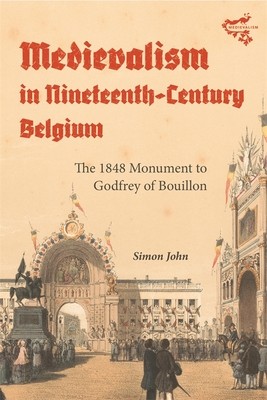
- We will send in 10–14 business days.
- Author: Simon John
- Publisher: Boydell Press
- ISBN-10: 1783277637
- ISBN-13: 9781783277636
- Format: 15.6 x 23.4 x 1.6 cm, hardcover
- Language: English
- SAVE -10% with code: EXTRA
Reviews
Description
This study of the monument of Godfrey of Bouillon offers new insights to the political uses of public monuments devoted to figures from the past, modern uses and appropriations of the Middle Ages, and the role of historical culture in the creation of national identity.
On 15 August 1848, a bronze equestrian statue of the crusading hero Godfrey of Bouillon (d.1100) was unveiled in the Place Royale in Brussels, Belgium's capital. Conceived and largely funded by the national government, its creation was a major element in a programme of political and cultural consolidation put into place after the Belgian Revolution (1830-1831) and the consequent establishment of the nation's independence. From the outset, the monument was designed to transmit ideas about history and nationhood, and functioned as a focal point in discussions of politics, language, religion and identity. This book sheds new light on a range of dynamics in nineteenth-century Belgium, using the statue as a prism; it investigates responses to it both home and abroad, and traces broader national interest in the commemoration of Godfrey, adopted as a national hero despite being born almost 800 years before the emergence of the state. Above all, it reveals that Belgian politics and culture in this period were profoundly shaped by a sustained interest in the Middle Ages, and by efforts to shape a historical narrative that traced Belgian nationhood back to that era, and beyond.EXTRA 10 % discount with code: EXTRA
The promotion ends in 18d.01:35:07
The discount code is valid when purchasing from 10 €. Discounts do not stack.
- Author: Simon John
- Publisher: Boydell Press
- ISBN-10: 1783277637
- ISBN-13: 9781783277636
- Format: 15.6 x 23.4 x 1.6 cm, hardcover
- Language: English English
This study of the monument of Godfrey of Bouillon offers new insights to the political uses of public monuments devoted to figures from the past, modern uses and appropriations of the Middle Ages, and the role of historical culture in the creation of national identity.
On 15 August 1848, a bronze equestrian statue of the crusading hero Godfrey of Bouillon (d.1100) was unveiled in the Place Royale in Brussels, Belgium's capital. Conceived and largely funded by the national government, its creation was a major element in a programme of political and cultural consolidation put into place after the Belgian Revolution (1830-1831) and the consequent establishment of the nation's independence. From the outset, the monument was designed to transmit ideas about history and nationhood, and functioned as a focal point in discussions of politics, language, religion and identity. This book sheds new light on a range of dynamics in nineteenth-century Belgium, using the statue as a prism; it investigates responses to it both home and abroad, and traces broader national interest in the commemoration of Godfrey, adopted as a national hero despite being born almost 800 years before the emergence of the state. Above all, it reveals that Belgian politics and culture in this period were profoundly shaped by a sustained interest in the Middle Ages, and by efforts to shape a historical narrative that traced Belgian nationhood back to that era, and beyond.

Reviews